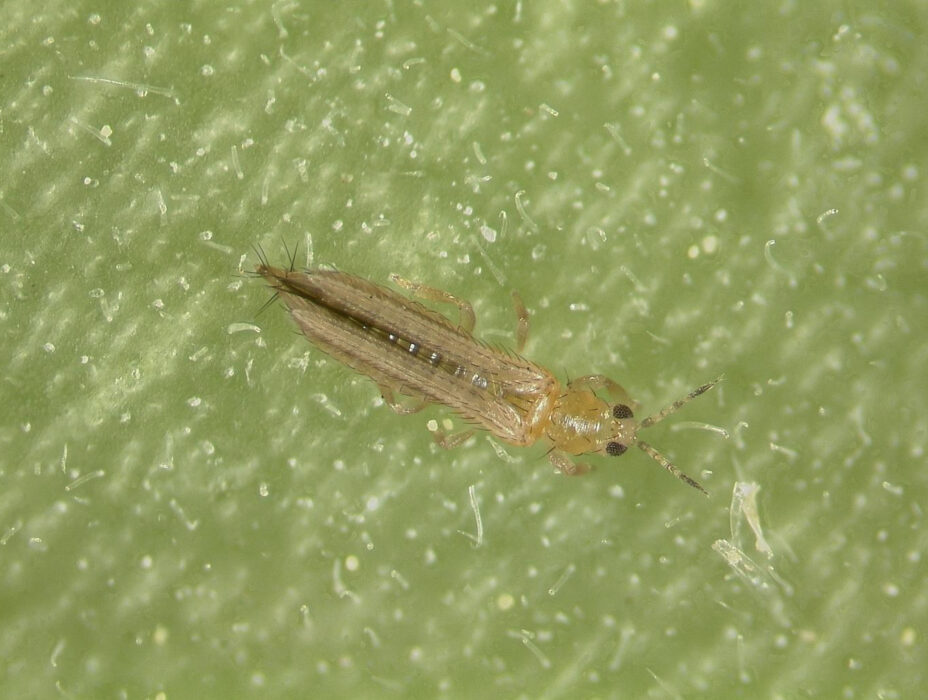
Thrips. No, it’s not an STI even though it sounds like it could be – thrips are a plant parent’s worst nightmare and could easily take out a few of your favourite plants if you don’t realize you’ve caught them soon enough! Basically lice but for plants, these sneaky little insects like to show up unannounced, stay hidden, and you usually don’t notice you’ve got a problem until it’s much too late.
If you ever find yourself in this predicament, I hate to say it but sometimes the easiest solution is to toss your plant, have a little funeral for it, acknowledge you were a neglectful parent and move on. Here are some tips I’ve gathered from www.almanac.com and my own experience dealing with the little nasties.
How to tell you have thrips: Clear indicators of thrips are if you see tiny black specks on your leaves and buds. Other insects leave black specs on plants too, so use a magnifying glass to confirm that your pests are thrips. An easy way to look for thrips is to bang a branch or leaves over a sheet of white paper and compare what you see with the image shown above or do a quick Google search.
Adult thrips are slender and tiny. Their colours can be anywhere from yellow to brown or black, and if you try to get close to them, they will probably leap or fly away. They have narrow, fringed wings and the nymphs look like even smaller adults, though they tend to be light green or yellow rather than darker colors. Their wings are also not fully developed, and they sometimes have red eyes.
What are thrips: Thrips are tiny insects about as fat as a sewing needle that dine on many plants around the globe. Also known as thysanoptera or thunderflies, thrips are sucking insects that can cause damage to plants; however, the damage they cause can be much worse if they transmit viruses to your plants too.
Damage Control: Thrips damage includes streaks, silvery speckling, and small white patches on your plants. This happens because the thrips suck plant cells from many garden plants, flowers, fruits, and shade trees. If you have a major infestation of thrips, your plants might be stunted with damaged flowers and fruit. The damage that you notice might instead come from the virus that the thrips spread — usually, tomato spotted wilt virus.
How to get rid of thrips: To keep thrips populations under control you can try using yellow or blue sticky traps. Another method you can try is to shake your plant’s branches or stems to knock them off and catch them on a cloth you can then dispose of.
Thrips have an interesting life cycle so even if you think you’ve got them all there could still be eggs waiting to hatch deep within a plant’s stem. A few rounds of insecticidal soap will kill them. Follow the package’s directions and spray the plants twice, three days apart and the thrips should disappear. You can redo the process a few times if you want to be sure. To help ensure your infected plant doesn’t spread to your entire collection, as soon as you see you have thrips you need to remove that plant from the room and isolate it.
Green Tip: You can plant various flowers to attract beneficial insects that are natural predators to thrips. Some good predators include pirate bugs, lacewings, and lady bugs.










